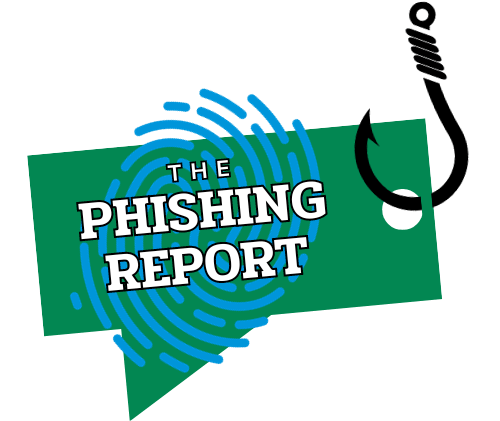In today’s hybrid workplace, you can’t afford to overlook the security risks that come with Bring Your Own Device (BYOD) policies. While allowing personal devices offers flexibility and cost savings, it also opens the door to potential data breaches and network vulnerabilities that could devastate your organization. You’re likely aware of basic security measures, but implementing truly effective BYOD protection requires a strategic approach that goes beyond simple password policies and antivirus software. The following three proven strategies will transform your BYOD security from a potential liability into a robust defense system that keeps your corporate data safe.
Key Takeaways
- Implement comprehensive MDM solutions with secure containerization to separate personal and corporate data on employee devices.
- Deploy Zero Trust access controls with MFA requirements and real-time device posture verification before granting network access.
- Enforce strong encryption standards (AES-256 for data at rest, TLS 1.3 for transit) across all BYOD devices.
- Establish automated remote wiping capabilities and incident response protocols for lost or compromised devices.
- Conduct regular security awareness training for employees on BYOD policies, incident reporting, and best practices.
Mobile Device Management Solutions
Organizations can’t afford to overlook Mobile Device Management (MDM) solutions when implementing BYOD policies. Your MDM strategy must address both corporate data protection and employee privacy concerns while maintaining regulatory compliance. You’ll need to implement robust authentication protocols and establish clear boundaries between personal and business data on devices.
To strengthen your MDM framework, you should focus on mobile app security through containerization and secure app wrapping. This guarantees that corporate applications remain isolated from personal apps, reducing the risk of data leakage. You’ll want to enforce encryption standards for both data in transit and at rest, while implementing remote wiping capabilities for lost or stolen devices.
User training plays a vital role in your MDM strategy’s success. You must educate your employees about security best practices, acceptable use policies, and incident reporting procedures. Your training program should cover secure password management, recognition of mobile security threats, and proper data handling protocols. By combining technical controls with extensive user training, you’ll create a more resilient BYOD environment that protects your organization’s sensitive information while respecting employee privacy.
Zero Trust Access Controls
Security teams must implement Zero Trust access controls as a cornerstone of any BYOD security strategy. The principle of “never trust, always verify” guarantees that every device and user accessing your network undergoes rigorous identity verification before gaining access to corporate resources. You’ll need to establish continuous user authentication processes that validate both the device and the user’s credentials at multiple checkpoints.
To effectively implement Zero Trust controls for your BYOD environment, focus on these critical components:
- Deploy multi-factor authentication (MFA) across all access points, requiring users to prove their identity through multiple verification methods before accessing sensitive data
- Implement real-time device posture checks that verify security compliance, patch status, and potential compromises before granting network access
- Establish context-aware access policies that consider factors like location, time of day, and risk level when determining authorization levels
Your Zero Trust framework should constantly monitor and assess risk levels, automatically adjusting access permissions based on behavioral analytics and compliance status. Remember that successful implementation requires balancing security requirements with user experience to maintain productivity while protecting corporate assets from unauthorized access.
Data Encryption Standards
Three critical encryption standards must be enforced across all BYOD endpoints to safeguard your corporate data. First, you’ll need to implement AES-256 encryption algorithms for all data at rest, guaranteeing that stored information remains protected even if devices are lost or stolen. Second, you must enforce TLS 1.3 or higher for all data in transit, protecting information as it moves between employee devices and your corporate networks.
Your third requirement focuses on end-to-end encryption for all business communications and file sharing. You’ll need to verify that your messaging platforms and collaboration tools support strong encryption protocols that align with your data protection policies. Don’t forget to implement automatic encryption for all corporate email attachments and documents downloaded to BYOD devices.
To maintain compliance, you should regularly audit your encryption implementations and update your standards as new security threats emerge. You’ll also need to ascertain that your encryption keys are properly managed and stored separately from the encrypted data. Remember that robust encryption standards aren’t optional – they’re essential safeguards against data breaches and regulatory violations in today’s BYOD environment.
Frequently Asked Questions
How Can Employees Securely Dispose of Their Personal Devices Containing Company Data?
You’ll need to perform complete data wiping techniques on your device using certified software, then utilize secure recycling options through approved vendors. Document the disposal process to maintain compliance with data protection requirements.
What Insurance Coverage Should Companies Maintain for Employee-Owned Devices Used Professionally?
Like a safety net beneath a tightrope, you’ll need extensive device liability insurance that’s rock-solid. Secure coverage limits of $1-2 million per incident, plus cyber protection for data breaches on employee-owned devices.
Can Organizations Legally Monitor Personal Communications on BYOD Devices?
You’ll need explicit employee consent to monitor personal communications on BYOD devices. Be aware of legal implications – without proper agreements, you’re risking privacy violations and potential lawsuits. Document all monitoring policies clearly.
Who Pays for Device Repairs When Damage Occurs During Work-Related Activities?
Prudent policies pinpoint your repair responsibility based on device ownership. You’ll need to check your company’s BYOD agreement – typically, you’ll cover personal device repairs unless specific damage occurred during mandatory work tasks.
How Do Companies Handle Data Privacy During Employee Leaves or Terminations?
You’ll need clear data access policies defining employee responsibilities for wiping corporate data upon departure. Your HR team should enforce immediate account deactivation and verify all company information’s been removed from personal devices.
Final Thoughts
Like a fortress protecting its crown jewels, your BYOD security strategy must be impenetrable. You’ll need to implement extensive MDM solutions to maintain control over personal devices, while zero trust access controls serve as your first line of defense. Don’t forget to enforce robust data encryption standards – they’re critical for compliance and risk mitigation. By adopting these three strategies, you’re building a resilient security framework that safeguards your organization’s assets.

